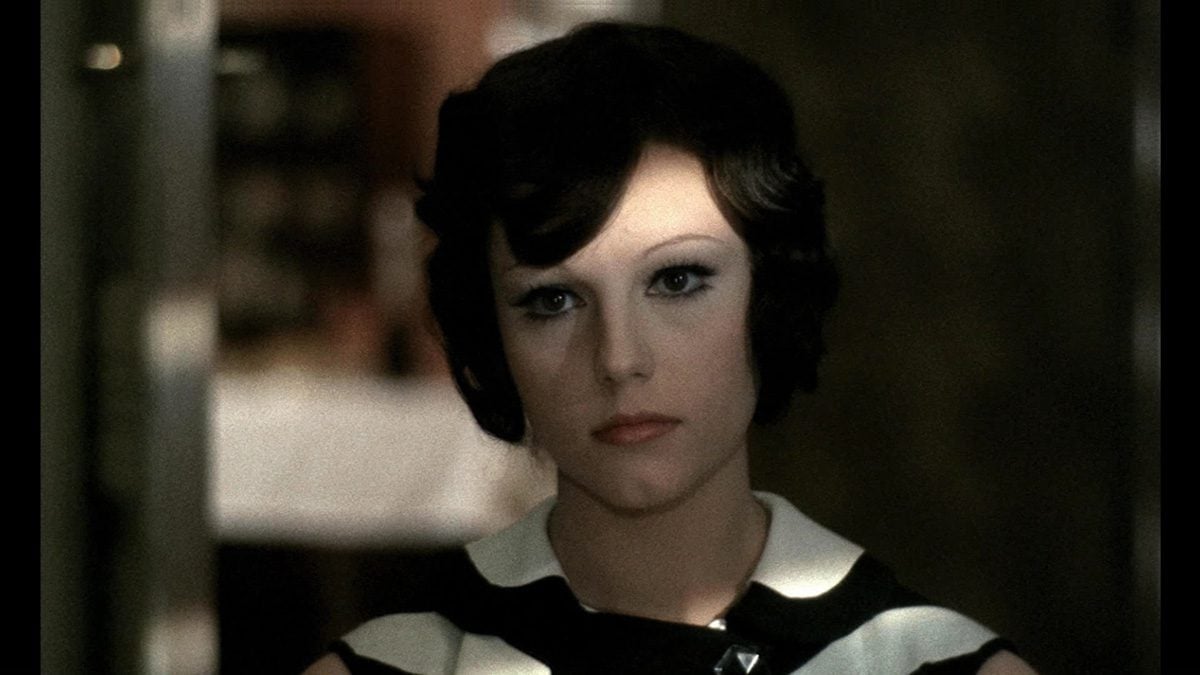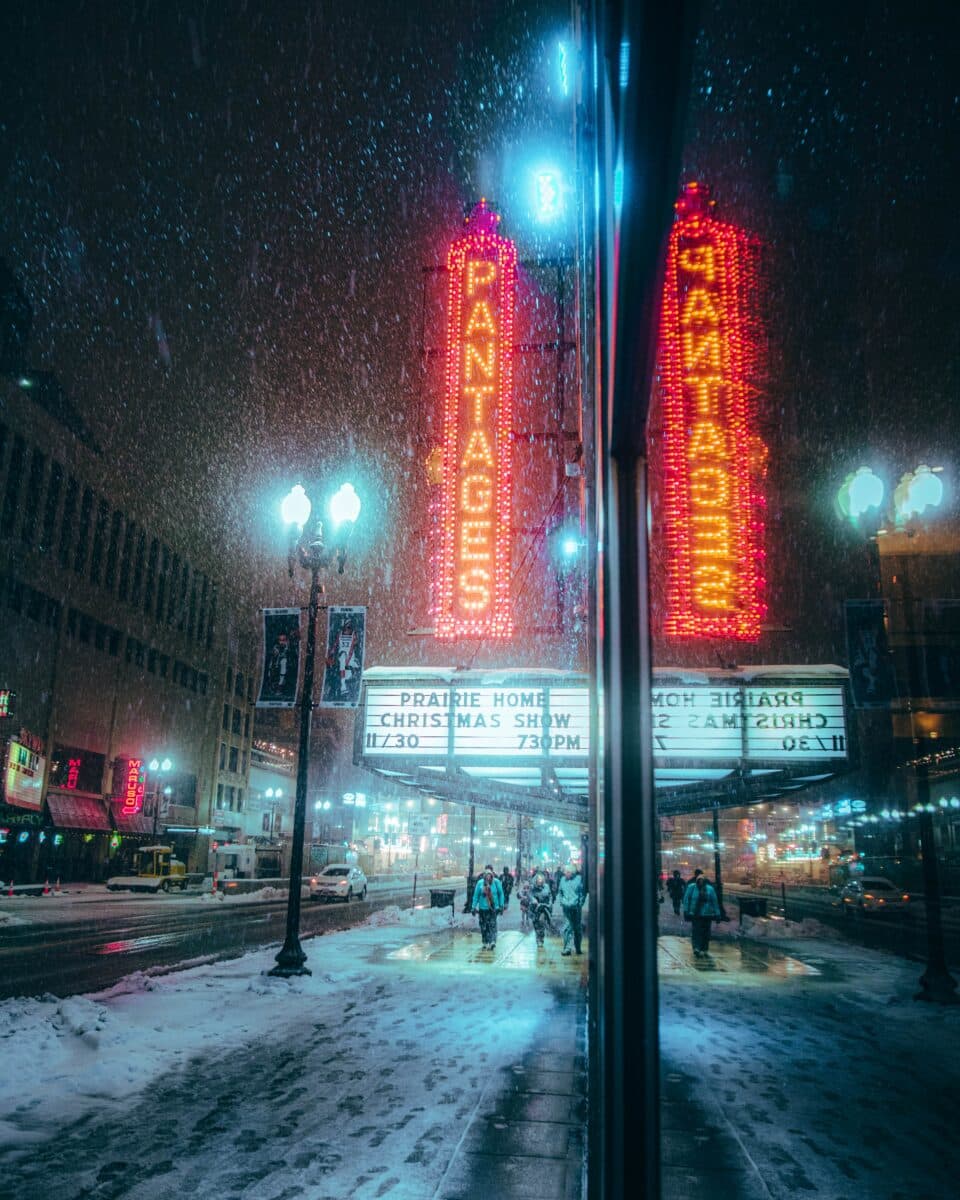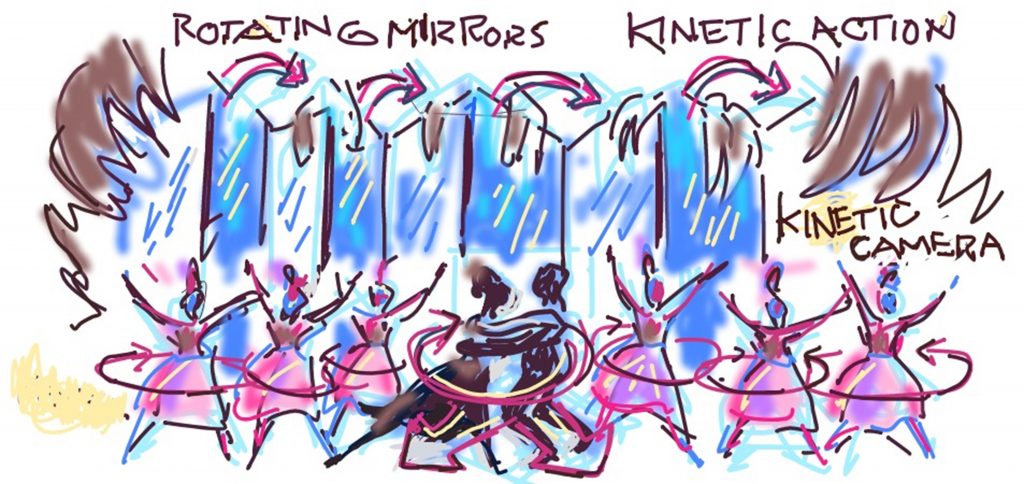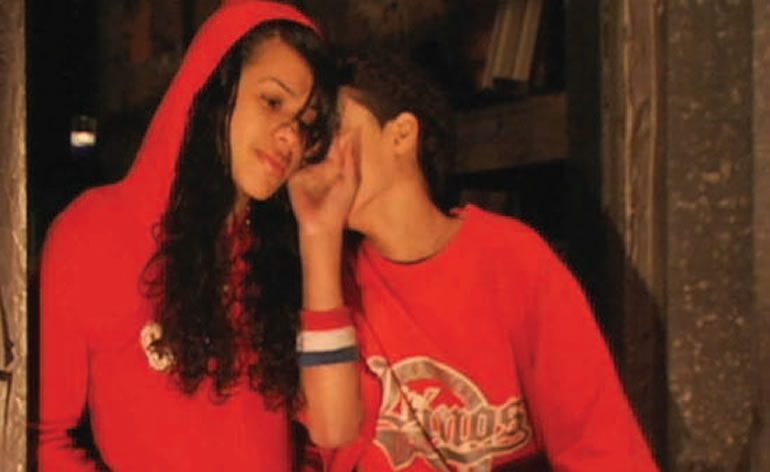Camera Composition
That Tells the Story
By David Landau
Composition is selecting placement of everything within the frame and deciding what has emphasis. If we fail to do this, if we just shoot a shot, the frame could become visually dense, filled with details that turn out to be extraneous to the story and prevent the audience from getting the point the cinematography is trying to make. Conversely, the shot could become too sparse, not using the framing to communicate the feeling of the story and leaving it all up to the dialog, which can visually bore a viewer. The eye and the camera do not see the same thing. The brain is actively and constantly processing information from the eye and cuts out unwanted details that, in the camera’s passive view, is given equal importance.
Camera Placement
First is camera placement. Before you can decide where to place the camera, you need to understand exactly what should dominate the composition, what should be included and what should be excluded from it, and what meaning will be conveyed by the shot beyond what is contained in the frame. Effective stories have strong core ideas. So, what is this story about? What is the film’s theme? What is the director’s focus? Once a cinematographer knows this, then she/he can make every composition support the core idea of the film, the story and the scene.
A DP can create a visual strategy where the placement of the character in the frame is also plotted throughout the film to match his/her journey and change. Perhaps he is off-center and in unbalanced framings until he begins to learn and change, then he starts to be in more balanced framings, such as in the work of Karl Struss, ASC, in the great silent film, “Sunrise,” where the main character is framed at beginning in the boat, and then, differently at end in the boat at night. Perhaps depth of field changes as the character changes, perhaps lenses change, beginning with wide angle and moving towards telephoto as in the work of John Bailey, ASC, in the film, “Ordinary People,” where he photographed the teenager with the counselor with wide angle lens at the beginning of the story, but as they grew closer, he shot them with longer and longer lenses to close the distance visually and blur away the background. Color palettes can change as well. Angles can change – such as always dolly behind the characters until they learn something or change – then the camera dollies in front of them – as again in “Sunrise.”
Eye Line is also part of dynamic framing. In artistic cinematography, the actors are positioned for the camera, not the other way around. The closer the subject looks towards the camera lens the more intimate the scene becomes for the audience, the more they feel for what the character is saying/thinking/feeling. Seeing both eyes allows more clues for the audience to understand the facial expressions. Not seeing one eye makes the subject a little more removed from the viewer – the audience is an uninvolved observer. Seeing 3/4s back is even more removed, but seeing over their shoulder becomes an indirect subjective point of view – we see what they see. We don’t see their reaction, only what they are looking at.
Viewpoint is also a major tool in composition. Camera height in relationship to the subject and in relationship to the surroundings can change the audience’s perspective on what is going on and how someone is feeling. Eye level, high angle and low angle are used to show equality, inferiority and superiority when used in CU and in MS shots. But with wide angle lenses and telephoto lenses the camera height can create unique views that imply spying, distancing, intimacy, etc. Since we normally see at eye level, shooting at eye level is “normal”. Shooting at a different angle adds dynamics to the shot – allowing the audience to see life from a different perspective.
Camera Framing
Framing is all about directing the viewer’s attention to a focal point within the frame and giving contextual clues that are derived from the story itself. Audiences tend to assume that if it’s in the frame, it’s there for a reason – it has meaning. It’s a big screen and the human eyes converge on one focal point – so composition will help direct the viewer’s attention.
How to make something the focal point? Size, Focus, Brightest, Placement within frame (Top left – center/center), color, movement, compositional elements that lead to that subject such as converging lines are just a few. People read from left to right, top to bottom. Upper Left has more focus. Anything center gets more focus. Whatever is brightest gets more focus. What is in focus gets focus. What is largest gets attention. The audience also generally looks in the direction the people on screen are looking – so they look at whoever or whatever the characters are staring at within the frame as well.
Cinematic Composition is cinematic storytelling rather than just recording the image of what is going on. Several simple common ways to add cinematic imagery include;
- Frame within a Frame – adds foreground to background depth, can imply comfort or constraints, also removes the viewer from the subject as if we were spying on them;
- Movement within frame – allows the frame to be active; Obstruction of view – makes the viewer work for it, feel like they are eavesdropping, adds dept;
- Depth – adds 3-D space and implies a relationship between foreground, mid-ground and background. Add depth by not shooting against walls, move subjects out. Don’t shoot straight on like a play, rather from off angle to added dimension.
- Extremes – extreme wide shots and extreme close-ups are visuals we do not experience in normal life. So, they become more interesting and dynamic, thus cinematic.
Geometry is the grammar of composition. Converging lines, triangular composition and patterns all provide visual interest and can be used to make the image more dynamic. A great example of this the work of Vittorio Storaro, ASC, AIC, in the film, “The Conformist.” Lines, curves, textures all provide the image with interest and dynamics that can be used to convey a meaning or a feeling within an image. Because we read from left to right, lines from top left to bottom right give a sense of order, of moving away, going somewhere. While lines from bottom left to top right have more resistance, more disorientation, imply a more strenuous journey. Things moving left to right are going somewhere, while things moving right to left are coming from somewhere.
Curves clam and slow down the action. They have soft edges, and therefore, add a softness to the scene. Curved images are always seen in bedrooms, from pillows to bedposts to draping curtains. Curves can be sensuous, giving an association with the human body.
Using set and architectural elements are often used to create frame-within-frame, Dutch tilt for emotional effect such as in the work of Robert Krasker, BCS, ASC, in the film, “The Third Man.”
Using balanced and unbalanced framing can also support the storytelling through imagery. Balanced framing is “at rest” – more calm moments. A balanced frame is symmetrical, but it can also be felt as restricting, confining. Unbalanced framing is more active to the eye; thus, it can add tension, unease, urgency or importance to a scene. These are considerations cinematographers take into account when composing a shot.
Basic Composition Rules
The Rule of Thirds involves composing your head room, nose room and room for movement of actors. This rule comes from painting. Basically, the concept is to divide the frame into thirds both vertically and horizontally. According to painting and drawing esthetics, by placing important things/people’s head/people’s eye at the cross points we create more dynamic framing. It also assures enough head room and lead room when the eyes are placed at these points. For tighter shots the eyes are on the upper third intersections. Wide shots, establishing shots, extreme high angle shots eyes can be placed in the center thirds. The general rule of thumb (but all rules can be broken if done deliberately) is no more than two thirds of the frame should be filed with action/actor – leaving space for breathing.
The Hitchcock Rule, which basically says that the size of object in frame is related to its importance in the story. Audiences will assign its importance because it gets their attention. Big is important. If it’s not important now viewers will assume it could become important later. But if it’s never important ever maybe don’t make it so big. Don’t confuse the viewer.
Three Plains of Composition, which using the foreground, acting area and background to create interesting framing. Some call this the three axis of composition – X is horizontal, Y is vertical and Z is depth. The more depth within the frame, the more interesting the visual and the more the viewer feels they are looking into a real three-dimensional world rather than just a two-dimensional screen. Depth cues that can be added in framing include overlapping objects and using perspective – the smaller objects are the farther away they are. We can also employ aerial perspective, which is objects further away are less saturated and there is less visual contrast, to add depth to the imagery.
There is a major difference between just photography the image and creating artistic visuals that support the story and emotion of a scene. Not all films will merit as much cinematic compositions as others – such as most comedies which rely heavily on physical acting and dialog. But recognizing and understanding how dynamic camera framing can add to the storytelling is something all cinematographers, directors and even editors need to know, which will help them achieve creative work.

More helpful articles and resources
Documentary | Cameras | Lighting | Audio
Post a Job | Network | Join Discussions in the Filmmakers Forums Online
Subscribe to StudentFilmmakers Magazine
Print Subscription >>
Digital Subscription >>








